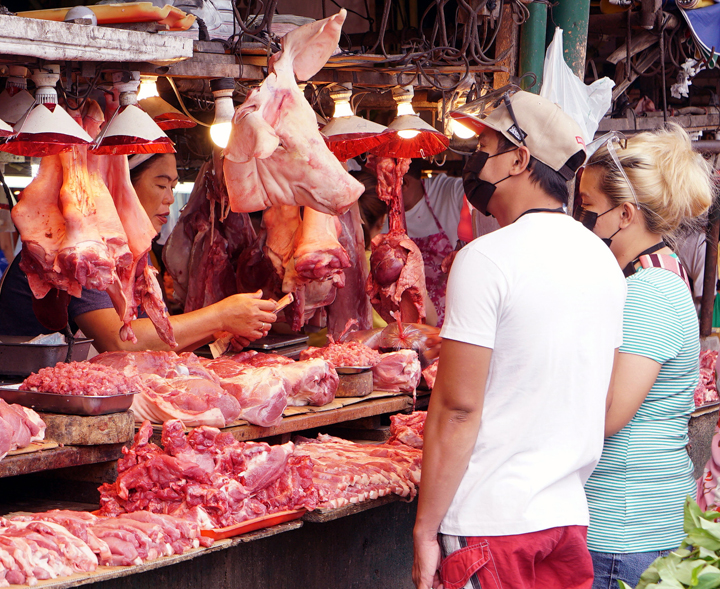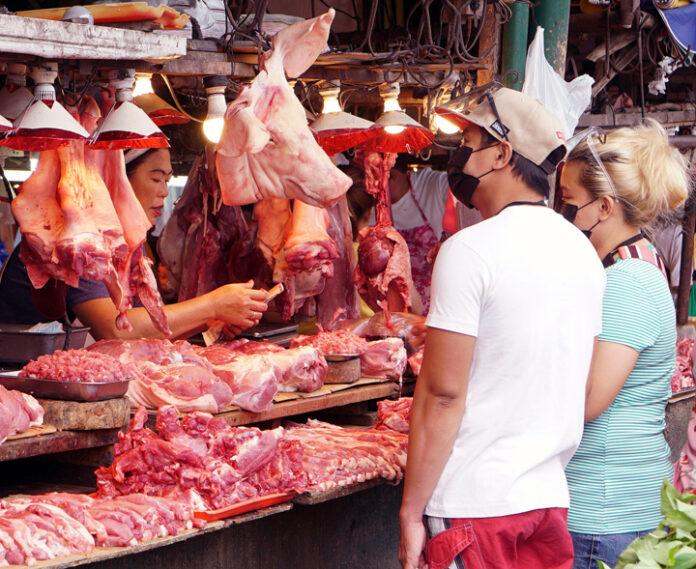
THE 15-percent compromise tariff rate for pork imports being discussed by senators and economic managers is “reasonable,” an industry group said, adding that it would be more beneficial to consumers if the lowered rate would last until 2025.
In a letter addressed to Senate President Vicente Sotto III, Meat Importers and Traders Association President Jesus C. Cham said lower pork tariffs are necessary to allow the country to compete with other pork importing countries, such as China.
Cham explained that the Senate’s proposed 15-percent compromise pork tariff rate would “afford a reasonable level of protection” to the hog producers.
However, Cham pointed out that at such a rate, the government’s target suggested retail price for imported pork, which is P300 per kilogram for liempo, “may need to be revised upward.”
Cham added that the compromise rate shall only take effect for the last nine months of Executive Order (EO) 128 which reduced tariffs on pork imports.
President Duterte issued EO 128 last month which cut pork tariffs to 5 percent for in-quota imports and to 15 percent for out-quota imports for the first three months of the measure, or until July 8. Afterwards, both tariff rates would increase by 5 percent for the next nine months before it reverts to its 30 percent (in-quota) and 40 (out-quota) percent levels.
Cham also proposed that the 15-percent tariff rate would be more beneficial to the economy and consumers if it would be “incorporated into the upcoming tariff schedule and remain in effect until end 2025.”
Cham claimed a 5-year period of lowered pork tariffs would increase supply of affordable pork and “usher peace for the next 4 years and allow the producers and the [Department of Agriculture] to buckle down and work on [industry] recovery.”
He added that it would also “allow legitimate importers to become more competitive vs unscrupulous importers.”
“There will be less incentive to underdeclare or misdeclare, thereby lessening the opportunities for graft and corruption. In/out quota rates may be unified and MAV [minimum access volume] set aside,” he said in his letter submitted to Sotto on May 3.
“We hope that the compromise may be reached and finalized soonest in order to dispel uncertainty and provide predictability,” he added.
‘Bold, courageous move’
Cham said the government’s decision to reduce pork tariffs was a “bold and courageous move,” noting that imported pork liempo now retails at P300 per kilogram in wet markets while pork kasim/pigue is being sold at P250 per kilogram.
Earlier, Sotto called for an all-senators caucus as backchannel negotiations continue between the Executive and Congress on a possible compromise over the rate by which pork tariffs will be cut, and the level by which the minimum access volume for pork importations would be increased.
The talk of a compromise began with the April 27 appearance at the Senate Committee of the Whole of Finance Secretary Carlos G. Dominguez III, who as head of the economic development cluster (EDC), took responsibility for the recommendations and final decision, as approved by the President, on the substantial declines in tariffs, and the increase in MAV to 400,000 metric tons.
The local hog sector had protested these moves, saying tariff cuts and huge importation quotas would effectively wipe out the P300-billion industry, already reeling from the impact of the African swine fever (ASF). Dominguez had told senators during the April 27 hearing that they were “open to a compromise” on the issues.
Sotto said they had asked the Executive to consider halving the rate of tariff cuts under Executive Order 128 which slashed the rates from the 30 (in-quota) and 40 percent (out-quota) to just 5 and 10 percent. “Overall, we asked for just half” of what the Executive decreed in terms of tariff cuts and MAV.
“If they wanted to allow 400,000 [MT] as minimum access volume, we suggested, just 200,000. As for the 40-percent tariff they wanted to cut, [we suggested 20] and for the 30 [percent], [just cut to] 15.”
Read full article on BusinessMirror

